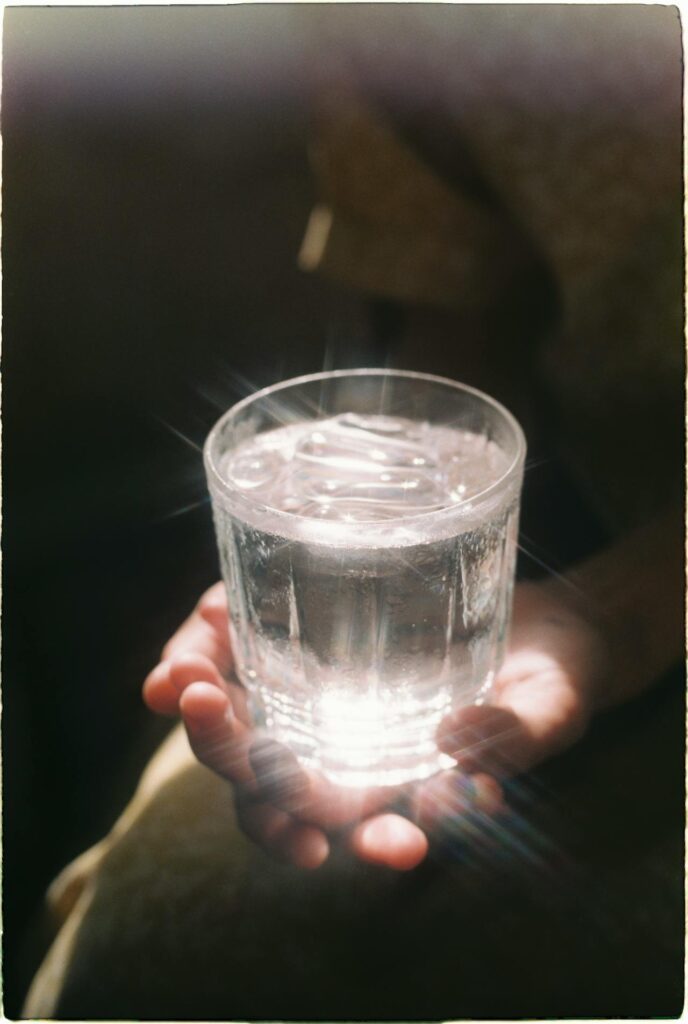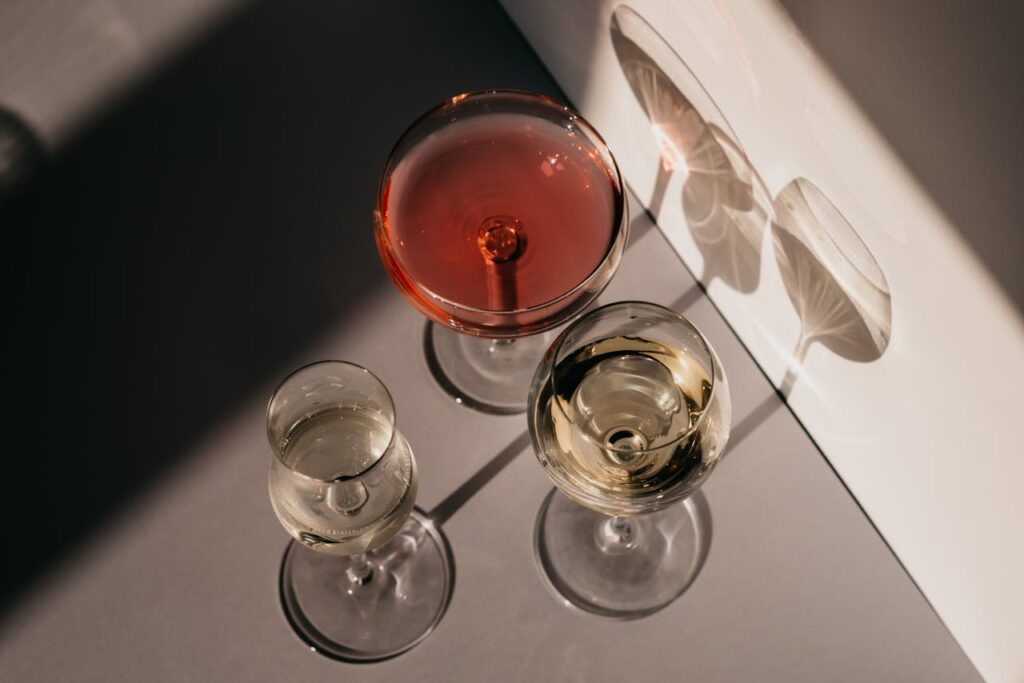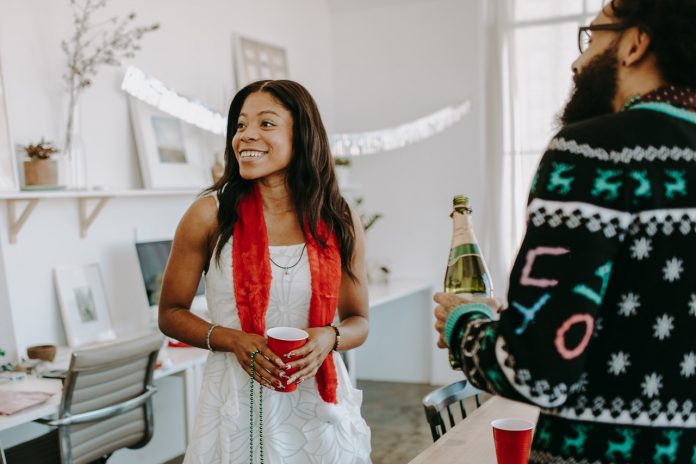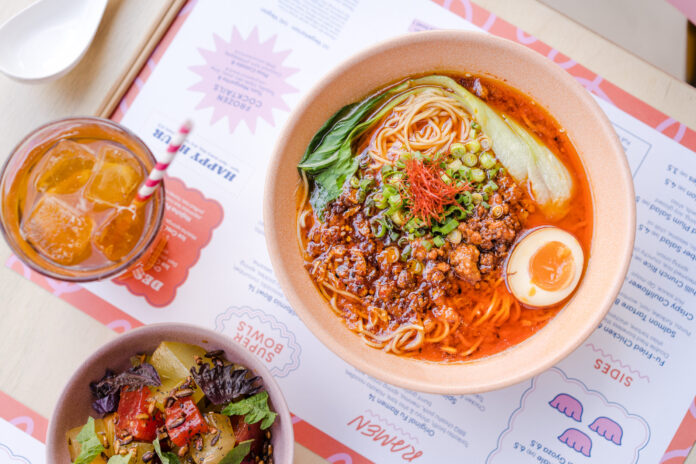A nice glass of wine is often associated with relaxation, socialising, and unwinding after a long day. However, for those on a weight management journey or striving to maintain a somewhat healthy lifestyle, the caloric content of wine can be a concern.
Fortunately, enjoying wine while watching your calorie intake is certainly not impossible, whatever the legions of slightly ill-informed PTs on TikTok might tell you. Indeed, with a few tips, tricks and adjustments, you can savour your favourite wine in a slightly more guilt-free fashion.
With that in mind, here are some top tips on how to incorporate both white wine and red into your weight management journey without derailing your progress.
Understanding The Caloric Content Of Wine
Before delving into strategies for managing your calorie intake while enjoying wine, it’s essential to understand the typical caloric content of these beverages. On average, a standard 147 ml (5-ounce) serving of white wine contains approximately 120 calories, while red wine typically contains around 125 calories per serving, though that can reach 165 calories or so quite easily.
However, this can of course vary depending on factors such as alcohol content, residual sugar, and production methods. Some sweeter wines, like Moscato or Riesling, may have higher calorie counts due to their sugar content, while drier varieties like Sauvignon Blanc, Pinot Grigio, and certain red wines like Cabernet Sauvignon or Merlot tend to be lower in calories.



Opt For Dry Wines
When choosing wine for weight management purposes, opt for dry varieties over sweeter options. Dry wines typically have lower sugar content and therefore fewer calories per serving. For white wines, Sauvignon Blanc, Pinot Grigio, and Chardonnay are excellent choices. For red wines, consider options like Cabernet Sauvignon, Merlot, and Pinot Noir. These wines offer the flavour profiles you love without the added sugars that can contribute to excess calories.
Additionally, if you enjoy the fizzy stuff, opt for dry sparkling wines like Brut Champagne or Prosecco, which tend to have lower sugar content compared to their sweeter counterparts such as Demi-Sec Champagne, Asti Spumante, and sweet Prosecco.
Practice Portion Control
While it’s tempting to pour yourself a generous glass of wine, practising portion control is key to managing your calorie intake. Stick to standard serving sizes, which is about 147 ml per glass. Avoid free-pouring or using oversized glasses, as this can lead to consuming more calories than intended. By being mindful of your portions, you can enjoy your favourite wine without overindulging.
Dilute With Sparkling Water
If you’re looking to stretch your wine further without significantly increasing your calorie intake, consider diluting it with sparkling water or soda water. This creates a refreshing wine spritzer that not only reduces the alcohol content but also cuts down on calories per serving. Mix equal parts wine and sparkling/soda water over ice, and garnish with a slice of citrus for added flavour. This simple trick allows you to enjoy a larger volume of beverage while keeping calories in check.
Plan Ahead For Special Occasions
Special occasions often call for a celebratory toast or a glass of wine with friends and family. If you have an event coming up where you know you’ll want to indulge in wine, plan ahead by adjusting your calorie intake earlier in the day. By making healthier food choices and incorporating more physical activity, you can create a calorie buffer that allows you to enjoy your favourite wine guilt-free.


Stay Hydrated
It’s essential to stay hydrated, especially when consuming alcohol. Drinking water alongside your wine not only helps pace your drinking but also keeps you feeling full and prevents dehydration. Aim to alternate between sips of wine and sips of water to maintain balance and minimise the risk of overindulgence.
Choose Lower Alcohol Wines
Alcohol content directly impacts the calorie count of wine. Wines with higher alcohol content tend to have more calories. Opting for wines with lower alcohol by volume (ABV) can help reduce your overall calorie intake. Look for wines with an ABV of around 12% or lower. This small adjustment can make a significant difference in your calorie consumption over time.
Pair Wine With Healthy Snacks
Pairing your wine with healthy snacks can help you feel more satisfied and prevent overeating. Choose nutrient-dense options like fresh vegetables, lean proteins, or whole grains. For example, a small plate of hummus with carrot sticks, a handful of almonds, or a piece of grilled fish can complement your wine and keep your hunger at bay. This approach not only enhances your sipping experience but also supports your weight management goals.

A Box Of Wine With A Lower Calorie Content
When it comes to enjoying wine while keeping an eye on your calorie intake, certain varieties stand out for their lower caloric content. Here’s a definitive list of wines that are typically lower in calories, along with their average calorie counts per that standard 147 ml (5-ounce) serving we mentioned earlier:
White Wines
- Sauvignon Blanc
- Calories: Approximately 120 per serving
- Notes: Crisp, dry, and often with notes of citrus and green apple.
- Pinot Grigio
- Calories: Approximately 122 per serving
- Notes: Light-bodied, dry, with flavours of pear, apple, and lemon.
- Chardonnay
- Calories: Approximately 123 per serving
- Notes: Can range from light and crisp to rich and buttery, often with notes of apple, pear, and oak.
- Muscadet
- Calories: Approximately 120 per serving
- Notes: Light, dry, and often with a slight minerality and citrus notes.
- Dry Riesling
- Calories: Approximately 120 per serving
- Notes: Light, dry, with high acidity and flavours of green apple, lime, and sometimes a hint of petrol. Yum.

Red Wines
- Pinot Noir
- Calories: Approximately 121 per serving
- Notes: Light to medium-bodied, with flavours of cherry, raspberry, and earthy undertones.
- Merlot
- Calories: Approximately 122 per serving
- Notes: Medium-bodied, smooth, with notes of plum, black cherry, and chocolate.
- Cabernet Franc
- Calories: Approximately 123 per serving
- Notes: Medium-bodied, with notes of red fruits, herbs, and sometimes a hint of bell pepper.
- Gamay (Beaujolais)
- Calories: Approximately 120 per serving
- Notes: Light-bodied, fruity, with flavours of red berries and a slight earthiness that can work well with steak.
- Barbera
- Calories: Approximately 125 per serving
- Notes: Medium-bodied, with high acidity and flavours of cherry, plum, and spice.
Sparkling Wines
- Brut Champagne
- Calories: Approximately 95 per serving
- Notes: Dry, with high acidity and flavors of green apple, citrus, and sometimes a hint of toast.
- Prosecco (Brut)
- Calories: Approximately 100 per serving
- Notes: Light, dry, with flavors of green apple, pear, and floral notes.
- Cava (Brut)
- Calories: Approximately 100 per serving
- Notes: Dry, with flavors of citrus, green apple, and sometimes a hint of almond.
- Brut Rosé
- Calories: Approximately 105 per serving
- Notes: Dry, with flavors of red berries, citrus, and floral notes.

Rosé Wines
- Dry Rosé
- Calories: Approximately 120 per serving
- Notes: Light, dry, with flavors of red berries, melon, and sometimes a hint of citrus.
- Provence Rosé
- Calories: Approximately 122 per serving
- Notes: Light, dry, with flavors of strawberry, peach, and sometimes a hint of herbs.
The Bottom Line
Enjoying wine while watching your calorie intake is entirely achievable with the right approach. By opting for dry wines, practising portion control, diluting with sparkling water, planning ahead for special occasions, balancing with nutrient-rich foods, staying hydrated, choosing lower alcohol wines, and pairing wine with healthy snacks, you can incorporate wine into your weight management plan without sacrificing your goals.
With moderation and mindfulness, you can savour every sip of your favourite wine while maintaining a healthy lifestyle. Cheers to enjoying wine and wellness in harmony!
*While this guide focuses on the caloric content of various wines, it’s important to note that calorie count does not correlate with alcohol units or the effects of alcohol on sobriety. Consuming lower-calorie wines does not necessarily mean you are consuming less alcohol.
Always drink responsibly and be mindful of your alcohol intake. Moderation is key to maintaining a healthy lifestyle and ensuring your safety and well-being. If you have any concerns about your drinking habits or need support, please seek advice from a healthcare professional or a support organisation.*





